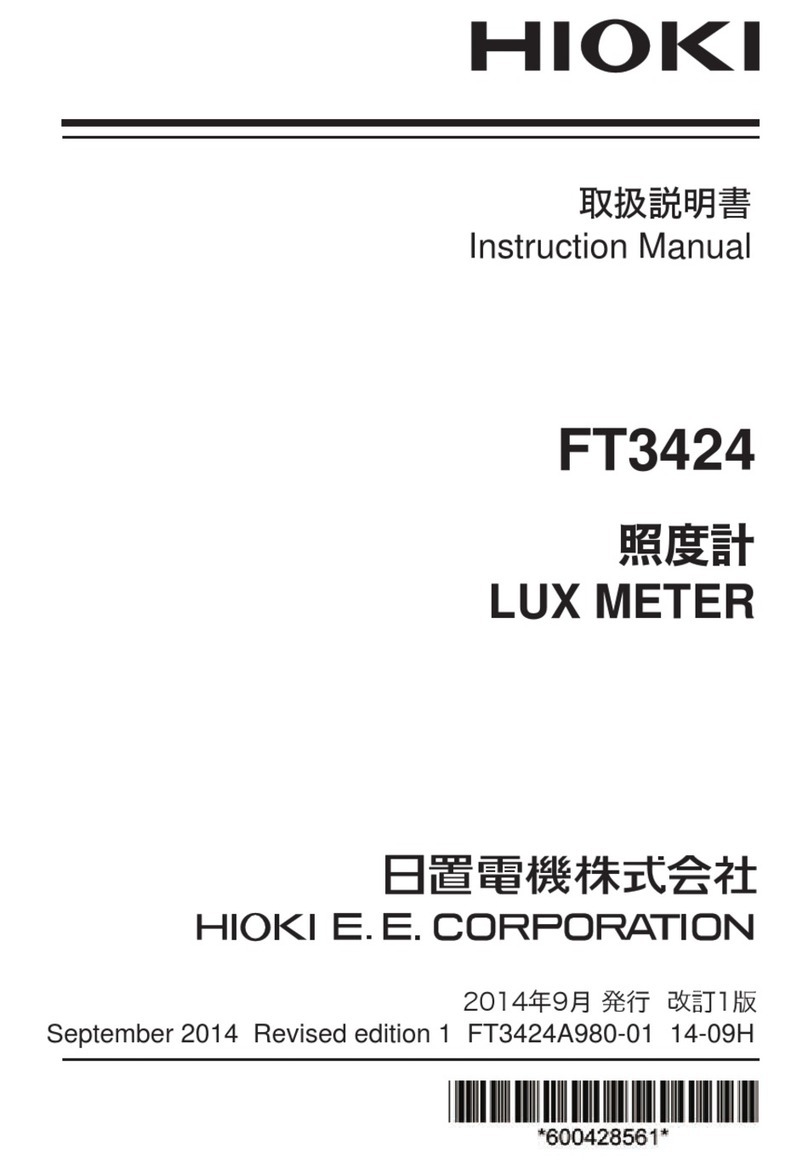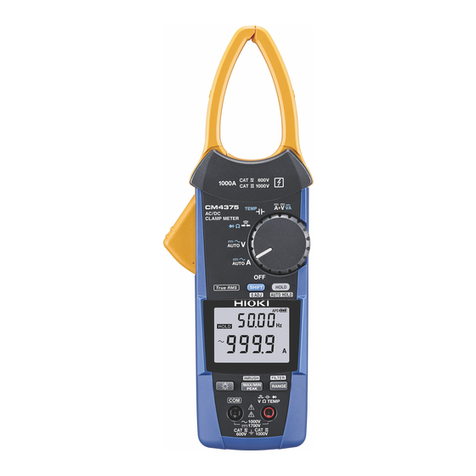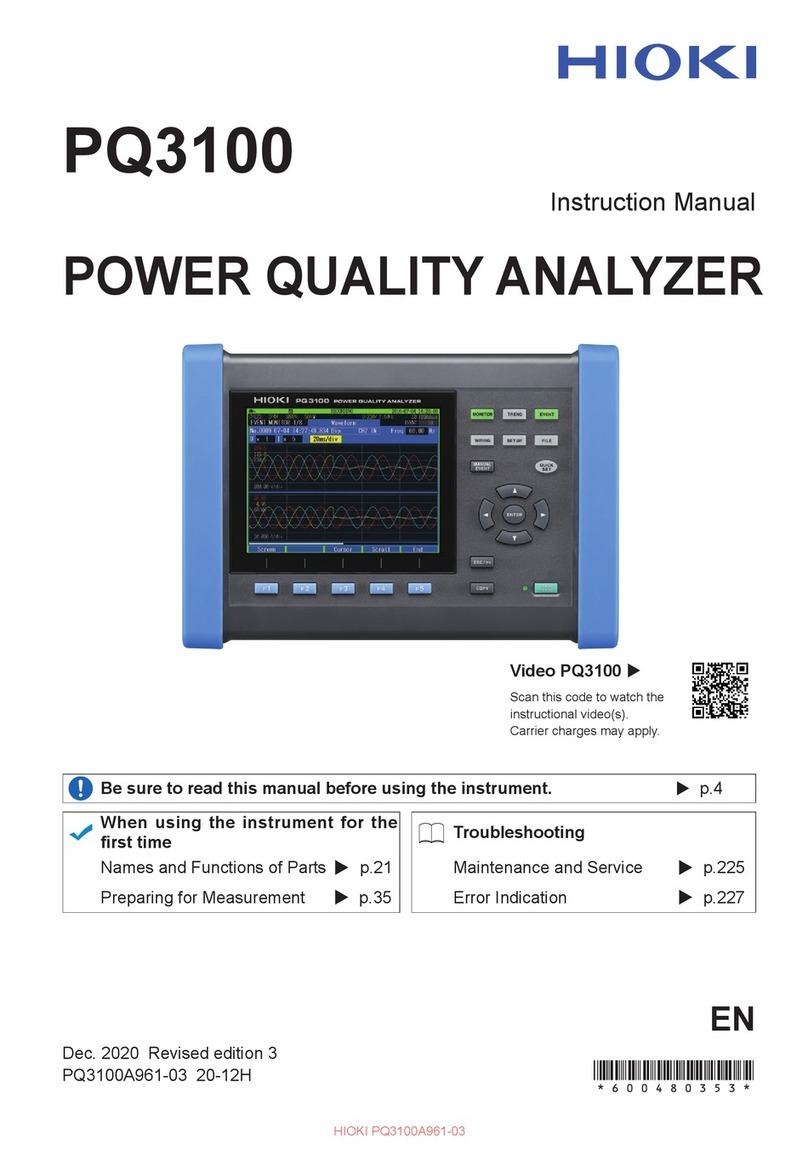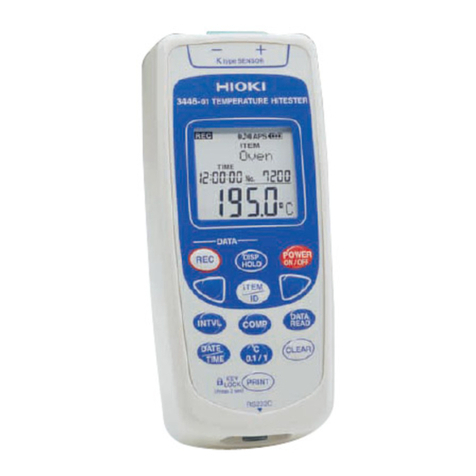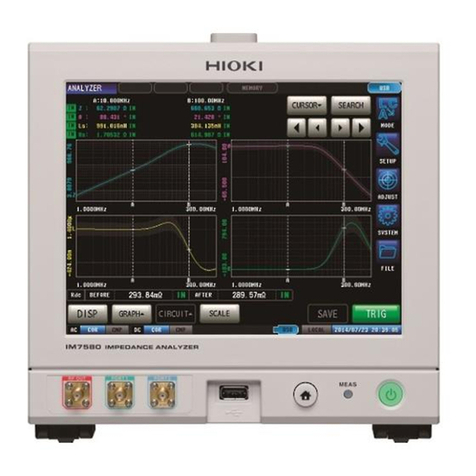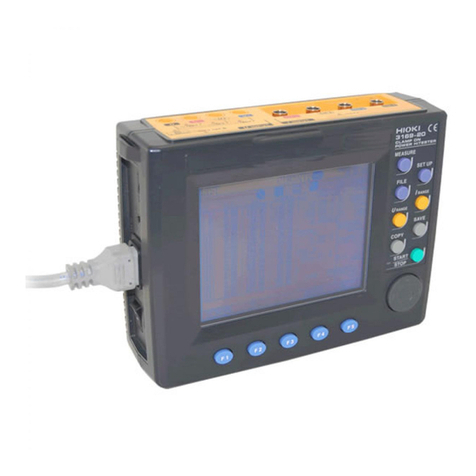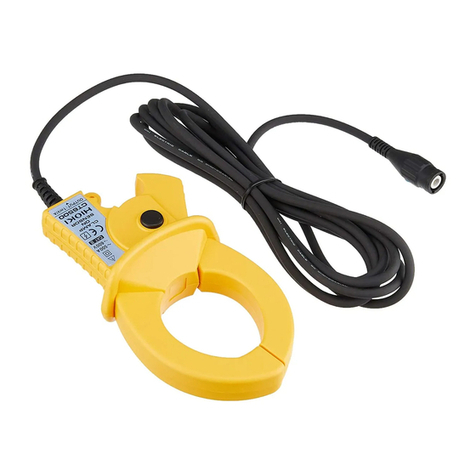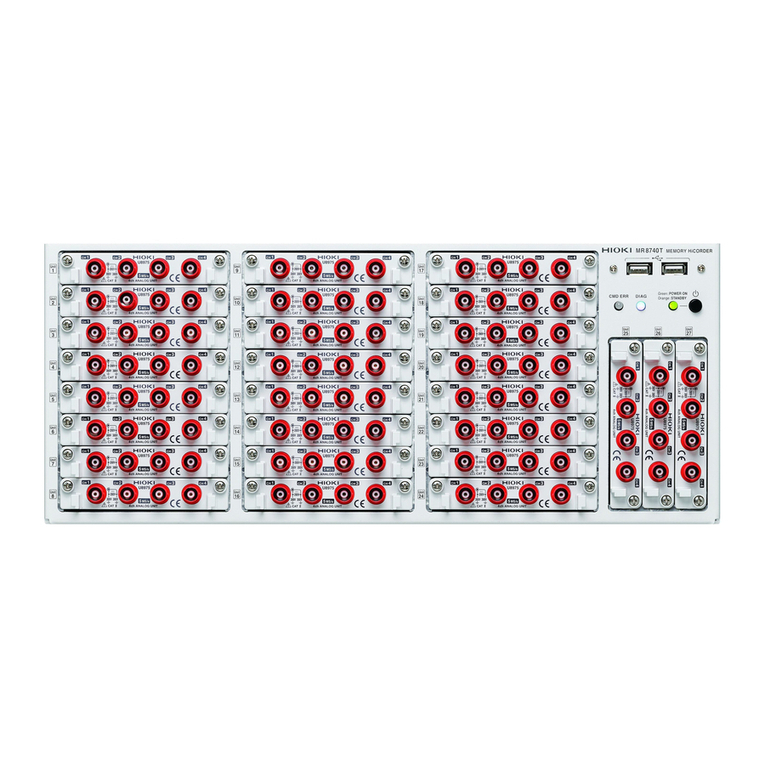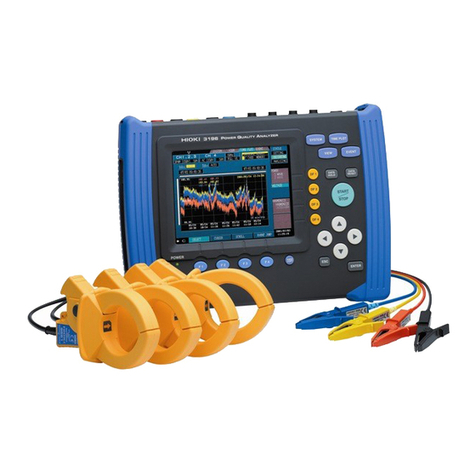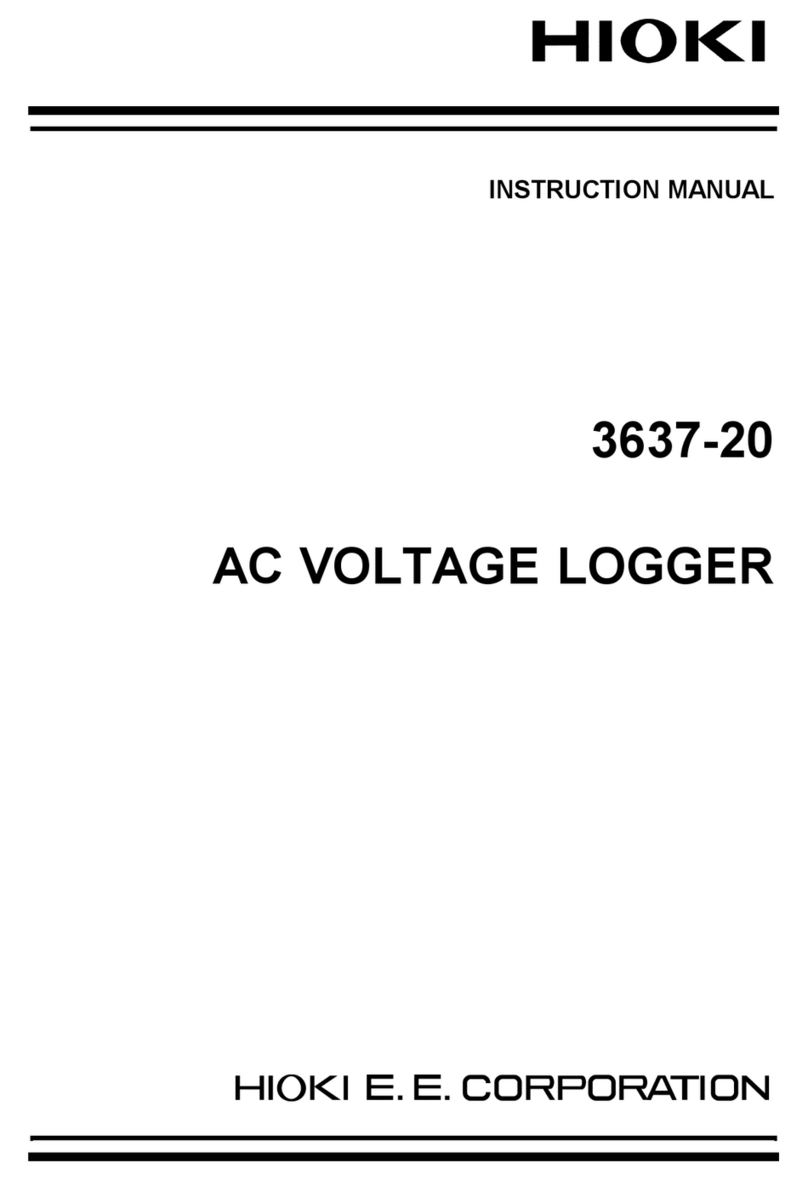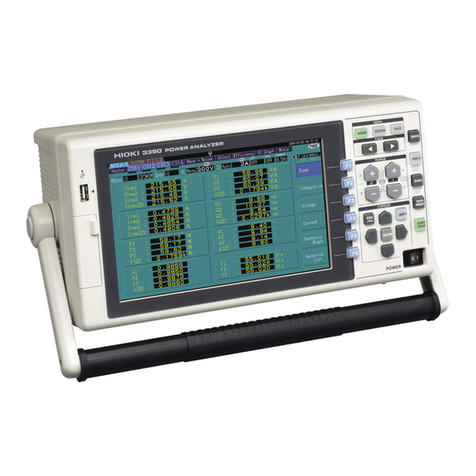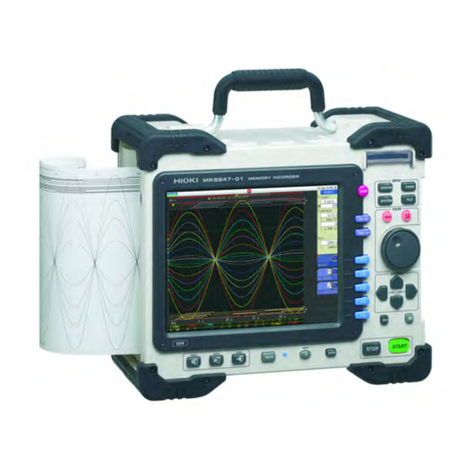
Contents
ii
7.8 Viewing Waveforms Divided
Into Blocks .................................. 153
8 Advanced Functions 155
8.1 Adding Comments ..................... 156
8.1.1 Adding, Displaying, and Printing the Title
Comment................................................. 156
8.1.2 Adding, Displaying, and Printing the
Channel Comments ................................. 157
8.1.3 Entering Alphanumeric Characters........... 159
8.2 Displaying Waveforms During
the Writing in the Memory
Simultaneously
(Roll Mode).................................. 163
8.3 Overlaying New Waveforms
With Past Waveforms................. 164
8.4 Setting Channels to Be Used
(Extending the Recording
Length) ........................................ 166
8.5 Converting Input Values
(Scaling Function) ...................... 167
8.5.1 Example of Scaling Settings .................... 169
8.6 Setting the Waveform Position
(Variable Function) ..................... 174
8.7 Fine-Adjusting Input Values
(Vernier Function)....................... 177
8.8 Inverting the Waveform (Invert
Function) ..................................... 178
8.9 Copying Settings to Other
Channels (Copy Function)......... 179
8.10 Setting Details of Modules ........ 180
8.10.1 Setting the Anti-aliasing Filter (A.A.F.)
(Model 8968 High Resolution Unit)........... 181
8.10.2 Setting the Probe Voltage Dividing Ratio.. 181
8.10.3 Setting Model 8967 Temp Unit ................. 182
8.10.4 Setting Model 8969 and U8969 Strain
Unit.......................................................... 183
8.10.5 Setting Model 8970 Freq Unit .................. 184
8.10.6 Setting Model 8971 Current Unit ............. 187
8.10.7 Setting Model 8972 DC/RMS Unit............ 187
8.10.8 Setting Model MR8990 Digital Voltmeter
Unit.......................................................... 188
8.10.9 Setting Model U8974 High Voltage Unit ... 189
8.10.10 Setting MR8790 Waveform Generator
Unit.......................................................... 190
8.10.11 Setting MR 8971 Pulse Generator Unit .... 192
8.10.12 Setting U8793 Arbitrary Waveform
Generator Unit......................................... 194
8.11 Registering Waveforms in the
U8793 Arbitrary Waveform
Generator Unit ............................ 197
6.3 Manually Printing Data by
Pressing the PRINT Key
(Selection Print).......................... 124
6.4 Setting the Print Density of the
Waveform .................................... 126
6.5 ConguringthePrinterSettings127
6.6 Advanced Print Functions......... 130
6.6.1 Printing the Screenshot............................ 130
6.6.2 Printing Reports (A4-Sized Print) ............. 130
6.6.3 Printing a List........................................... 132
6.6.4 Printing the Text Cooments ...................... 132
7 Monitoring and
Analyzing Waveforms
on the Waveform
Screen 133
7.1 Reading Measured Values
(Using Cursors A and B)............ 134
7.2 Specifying the Waveform
Range (Cursors A and B)........... 139
7.3 Moving the Waveform Display
Position ....................................... 141
7.3.1 Display Position ....................................... 141
7.3.2 Scrolling the Waveforms With the Jog
Dial and Shuttle Ring ............................... 141
7.3.3 Changing Position (Jump Function).......... 143
7.4 Plotting X-Y Composite
Curves ......................................... 144
7.5 Magnifying and Demagnifying
Waveforms .................................. 146
7.5.1 Magnifying and Demagnifying Waveforms
Horizontally (in the Time Axis Direction)
.... 146
7.5.2 Zoom Function (Horizontally Magnifying
a Part of Waveforms [in the time axis
direction])................................................. 147
7.5.3 Magnifying/demagnifying the
Waveforms Vertically (in the Voltage
Axis Direction) ......................................... 149
7.6 Monitoring Input Levels (Level
Monitor) ....................................... 150
7.6.1 Level Monitor........................................... 150
7.6.2 Numerical Value Monitor .......................... 151
7.7 Switching the Waveform
Screen Display
(Display Menu)............................ 152
7.7.1 Displaying Upper and Lower Limits on
the Waveform Screen.............................. 152
7.7.2 Displaying Comments on the Waveform
Screen..................................................... 152
7.7.3 Switching the Waveform Display Width .... 152
7.7.4 Switching the Sheet to Be Displayed........ 153

